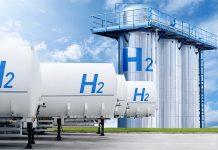Scotland’s devolved government has unveiled plans to accelerate still further the heady growth already seen in the nation’s clean generation capacities.
The ruling SNP’s “Energy strategy and Just Transition plan” prioritises yet more wind power, raises targets goals for green hydrogen, and maintains opposition to nuclear generation.
Open until April 4 for public responses, the draft sets out Holyrood’s route to: –
- More than doubling the nation’s present 13.4GW clean power capacity, adding 20GW more by 2030. The total could produce meet almost half of the nation’s current demand, or so the plan calculates
- 5GW of renewable and low-carbon hydrogen by 2030, rising further to 25GW by 2045, Scotland’s deadline to reach national Net Zero
- increasing contributions of solar, hydro power and marine energy to the energy mix
- maximising household, business and community benefit from energy projects, including through shared ownership of renewables
- consulting on a presumption against new North Sea oil & gas, as the nation defines a final policy on fossil fuel energy
- export surplus electricity and renewable hydrogen to support decarbonisation across Europe
- accelerated decarbonisation of domestic industry, transport and heat for buildings
- pressing the Westminster government to take stronger, more targeted action to inject more fairness into reformed energy markets
Alongside the strategy’s road map to generation milestones, an accompanying Just Transition Plan details support to be provided from Holyrood to train and re-skill Scotland’s energy workers, redirecting oil-dependent supply chains and contractors into the sustained prosperity of low-carbon power.
Scotland in 2050 could have more energy jobs than now, the plan foresees. In the low carbon sector, today’s total of 19,000 could reach 77,000 by mid-century.
Holyrood’s proposals set out actions needed from the Westminster government to reform energy markets, including in reserved policy areas including energy security, market mechanisms, network investment and market regulation.
Net Zero & energy secretary Michel Matheson declared “Scotland is an energy rich nation, with significant renewable energy resource, a highly-skilled workforce and innovative businesses across a globally renowned supply chain.
“The renewables revolution is global, as all countries seek to address concerns about climate change, and Scotland is at the forefront of this transition.
“Accelerating the transition towards becoming a renewables powerhouse makes sense – particularly in helping to mitigate against future global market volatility and against the high energy prices which are making life so difficult for so many people across Scotland.
“While we do not hold all the powers to address these issues at source, this Strategy sets out how we can achieve an energy transition that ensures we have sufficient, secure and affordable energy to meet our needs, support Scotland’s economic growth and capitalise on future sustainable export opportunities,” Matheson added.
Richard Lochhead MSP, minister for Scotland’s Just Transition said:
“The oil and gas industry has made a vast contribution to Scotland’s economy and its workers are some of the most highly-skilled in the world. But Scotland’s oil and gas basin is now a mature resource.
“A just transition to a net zero energy system will provide new green jobs. It will ensure we avoid repeating the damage done by the deindustrialisation of Central Belt communities in the 1980s”, Lochhead went on.
“There is a bright future for a revitalised North Sea energy sector focussed on renewables.”
The SNP opposes new nuclear stations. Hunterston B on the Ayr coast, one of Scotland’s two remaining plants, closed in January 2022 after 46 years. Essex-based renewables developers Xlinks are considering turning it into a factory making subsea power cables, with output destined for the developers’ £16 billion venture to port wind- and solar electricity from the western Saharan to Devon.
On solar, the draft strategy identifies a “significant appetite for greater solar deployment”. A substantial rise beyond the 0.4 GW of PV operating now, and even beyond the further 0.7 GW likely to built from Scotland’s current pipeline, is on the cards.
“We want to look at increasing that,” Matheson told the Scottish Parliament yesterday.
Thomas McMillan, chair of Solar Energy Scotland, said: “While minister have not immediately accepted ours and MSPs’ call to reach up to 6GW by 2030, the sector considers the firm commitment towards setting a target as a major step forward. We warmly welcome the strategy published today.”




